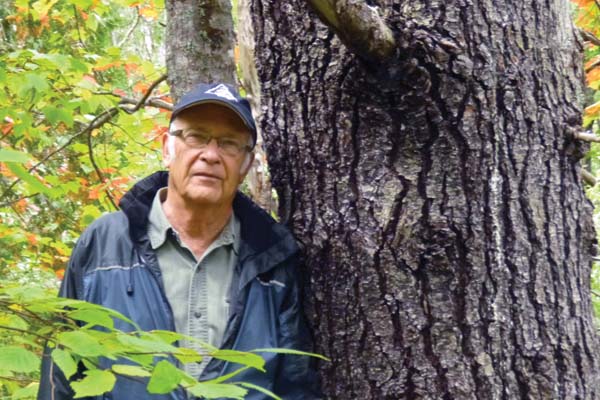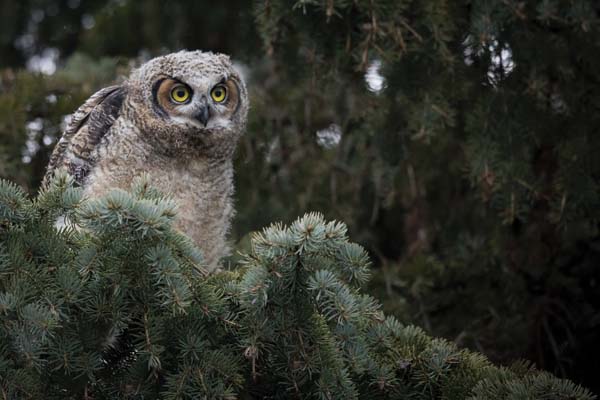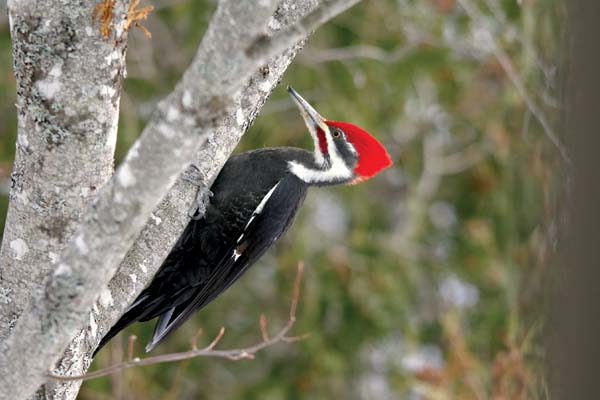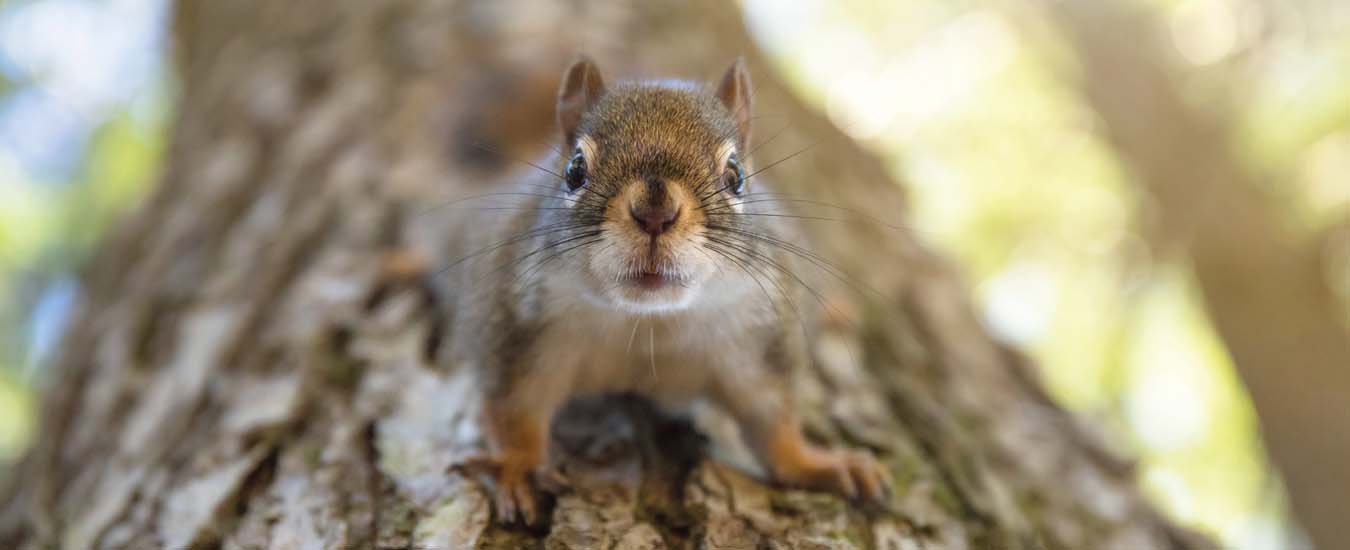Living the good life and walking the talk
By the time I was in my mid-20s, I’d completed an academic education, and had developed some sense of self. I grew up as an army brat, living across Canada. Along the way I began feeling more comfortable living close to nature, rather than surrounded by pavement, concrete and glass. Although I’m a social person, that understanding grew from spending time in the natural world. Dad taught me outdoor skills, and Mom supported outdoor interests by converting a small inheritance into a family dinghy. Even as a kid, being alone in nature awakened my senses, created anticipation, excitement and feelings of place and peace.
By the time I became a regional provincial biologist in the 1970s, I had a property wish list. An oil embargo at that time raised the prospect of shortages and reinforced a notion that a more independent, energy-efficient life might be prudent.
It was a time of back-to-the-landers. I never grew my hair long, but could relate to some of their values, particularly about developing a land and water ethic.
Any opportunity to buy a mature, healthy, pristine Acadian forest on a property surrounded by conservation lands would be rare and costly. Besides, such a forest would have no need for human intervention.

Bob Bancroft’s property includes all the desires of his wish list, and he’s living his ongoing adventure there to this day.
Photo by: Bob Bancroft
In time, I located 56 acres that fulfilled my wish list. It was former farmland that had grown back as a pioneer forest. Pasture grasses were still on the ground under young hardwood species like poplars, red maple, white and wire birch. Where spruce and balsam fir had colonized old fields, their year-round shade meant that only mosses took hold as ground cover. Long before, a hardwood swamp on the floodplain had been cleared, fenced and turned into pasture. Livestock had trampled the stream, leaving its water running helter-skelter over 10-12 acres.
Plenty of habitat challenges and recovery opportunities lay ahead for me to handle!
After several days spent scouting the property, I stood on the hillside overlooking the small valley to the south. An unusual feeling crept over me—I could be happy here.
I bought it. The adventure began!
This land could have been left alone to ecologically heal itself. That’s fine if you live long enough to see significant change. Forest/wildlife habitat features can require decades or centuries to develop. Given the longevity of many Acadian forest trees, and my own decidedly shorter lifespan, speeding up the process appealed to me.
Human activities often overpower nature. Could I work instead with the forces of nature? Could I help to hasten a natural recovery, and witness more results? Almost five decades into this experiment, my efforts are proving wildlife-helpful at a critical time on the planet. The science being applied here has a solid feedback mechanism called reality.
The woodland was a mix of the sun-loving, immature hardwoods and softwoods that tend to grow in on old fields. The species included red and mountain maple, white and grey birch, trembling and large-tooth aspen, cherries, willows, alders, balsam fir, tamarack, and white and black spruce.
I found scattered remnants of the forest that existed before it was cleared for farming. Several eastern hemlocks had been left on fields to provide shade for livestock. Other originals included a precious few yellow birch, sugar maple, white and black ash, beech, red spruce, white pine and young red oak.
Healthy forests offer important wildlife habitats. They contain older trees with small-to-large holes that are used by owls, ducks, chickadees, bats, flying squirrels and many more cavity-nesters. There are dead, standing trees for woodpeckers, nuthatches and others. Big, old dead tree trunks lying on the ground are used by salamanders, skunks, black bears, mink and many more. These and aquatic habitats were missing on the land I purchased.

A great horned owlet keeps a watchful eye on a visitor
Photo by: Brittany Crossman
During the 1970s and 80s federal and provincial governments offered woodland owners financial incentives to manage their woodlots. A management plan for the land base was a first step. Beyond the financial incentives was the opportunity to learn more about your woodland—yet the main focus of the program was to grow softwoods commercially for lumber or pulp. Management prescriptions usually called for clear-cuts, followed by plantings of spruce and the application of herbicides if hardwoods “interfered” with a pulpwood commodity. Wildlife needs were given a low priority.
Trees that grow on open areas are quite different from trees whose seeds can germinate on the damp forest floor in the dappled shade of older trees. Shade tolerant young trees can sprout, live and wait. Eventually an old neighbouring tree dies and topples, finally letting sunlight reach the forest floor. The light stimulates the young tree to grow quickly and fill the old tree’s sun space.
After some thought about this natural process, I decided to create some similar holes in the pioneer forest’s canopy to let light in, then plant the longer-lived, shade-tolerant tree species in the openings. Nature alone would take 100-150 years to re-establish a long-lived, healthy forest, if there were seed sources nearby for those tree species. This “gap mimicking” would speed things up in a natural way.
The approach meant selecting a small group of trees, felling and leaving them on the ground. They’d eventually decompose and add their organic material to replenish the soil. Then, taking into account the site and soil, I planted native Acadian tree species capable of growing in the sunny, new gaps. This approach ran into a wildlife problem that I will explain in the next issue.
Once that was solved, it worked well.
One doesn’t need 56 acres to share your property with more wildlife. Chipmunks can live out their lives on a third of an acre if they have food, water, shelter and no roaming domestic cats. Having more woodland has allowed me to create a wider variety of habitat “accommodations” for a diversity of plants and animals.
Forty-some years later, the new reality has otters sunbathing on a rock wall beside the bedroom window, and a bobcat strolling out of the woods in front of the house and standing up to look in the bird feeder. A school of sea trout arrive from the harbour into a pond below the house, announcing their presence by rising and jumping for insects over its surface. Spring days bring a chorus of peepers in another pond, while freshly laid salamander egg masses are safe in fish-free woodland vernal pools. Evenings stir with the hooting of barred owls near the nest box they’ve occupied for years.
It makes me feel at home!

a pileated woodpecker searches for a meal
Photo by: Bob Bancroft
My property wish-list list included:
1)Suitable, unpolluted soils for growing healthy, pesticide-free garden produce.
2) Woodland that could easily provide firewood (local heat) for a house I would design and build.
3) A south-facing hillside into which I could berm a house, capture more solar gain, and avoid flooding.
4) A freshwater stream and water to drink.
5) A valley floor with rich soils.
6) Close proximity to a protected harbour.
7) Some shelter from prevailing winds.
8) A town nearby with the many human and physical resources it could provide.
9) Honest, friendly neighbours.
10) A place where I could “walk the talk” associated with my wildlife education job by undertaking wildlife habitat improvements on the land and its fresh water. Let’s face it, this is “big kid” stuff that would be fun as well.
